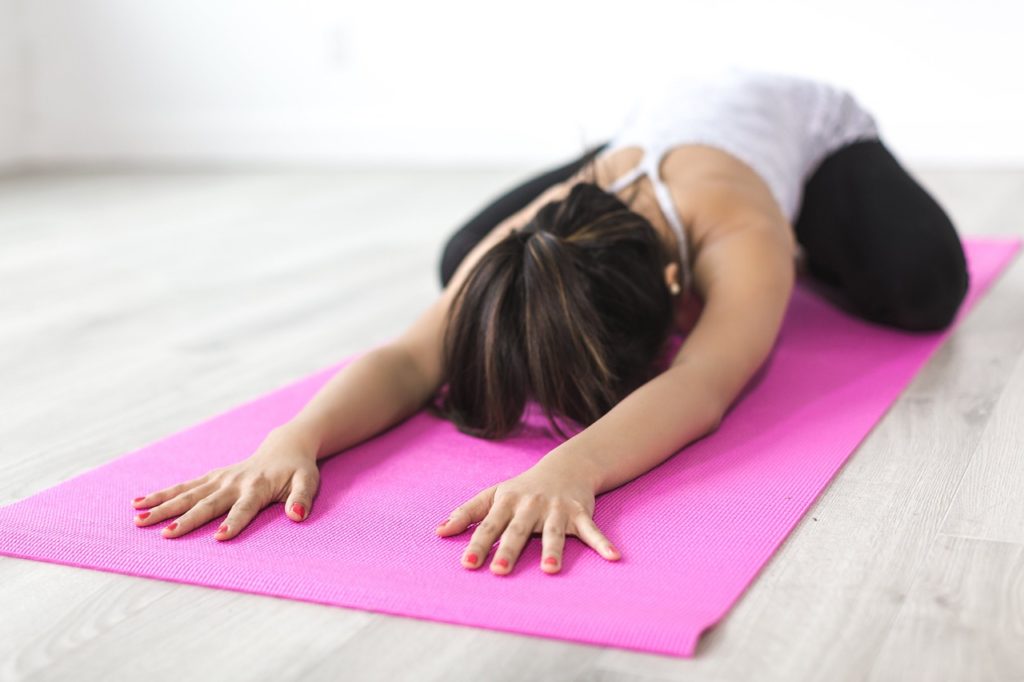Why take yoga classes? Yoga is a physical and spiritual program designed to improve your level of fitness. It originated in India several thousand years ago and simply said, yoga means ‘to unite’, which is the main goal of the yoga discipline.
This form of fitness blends strengthening the body through a series of poses. Focusing on performing those poses strengthens the mind, increases concentration and improves the mind-body connection. In addition, controlled breathing is interwoven with the body and mind training to control the energy flow and promote a sense of inner calm and relaxation.
Why Is Yoga Good For Me?
Experts and students alike can list many benefits of yoga. Here are some of the benefits you may enjoy by practising yoga:
- Increases flexibility, mobility, strength, energy and lung capacity
- Improves balance, muscle tone, metabolism and blood circulation
- Encourages overall health and wellness
What to Wear
Dress very comfortably. Stretchy clothing such as yoga pants or shorts and a tank top or shirt are perfect for yoga. Attend your first class wearing comfy clothes before buying new workout gear. That way you’ll know what you’ll be most comfortable in. And be aware that yoga is typically practised barefoot.
What to Bring
Bring yourself and a yoga mat. Some classes may provide them, but most do not. You should also have some water to stay hydrated and maybe a towel to dry off if you perspire easily.
What to Expect
Yoga is a body and mind experience. Remember that everyone attended their first yoga class at some point. Enjoy the whole body and mind workout and appreciate the journey.
The room may have a lower light level to promote relaxation and calmness. People may be sitting or lying on their mats, or gently stretching while they wait for class to begin.
Depending on your instructor, the class may engage in chanting to open and close the class. Consider it a unification of energy.
Your class will perform a series of poses. A big part of yoga is performing poses correctly, but this takes practice. Your instructor will walk around the room and gently adjust the poses of those in class. If this makes you uncomfortable, be sure to tell the instructor.
Some yoga classes may have props to help control and modify your poses. A blanket or strap, some blocks or a yoga ball can help you properly perform the pose until you are comfortable with that move.
Know that it’s OK to take a break. The typical pose for taking a break is the child’s pose. You do this by sitting on your heels, then laying your upper body on the mat with your arms outstretched over your head.
Some people experience an emotional release during yoga and get teary eyed. This is normal and may happen when you hold a pose and then release.
Finally, a closing chant may signal the end of class. You will typically perform a final pose. This is a relaxing pose and is a part of the cool down phase of your workout. It gives your body time to adjust and re-balance from your session.
Five types of yoga
There are a number of varieties of yoga. Here we look at five of the most popular types.
Hatha Yoga
Hatha is a gentle form of yoga. The classes are slow and you will hold each pose for a few breaths. This makes it a great choice for beginners or people with low levels of fitness.
Best for: Beginners. Because of its slower pace, hatha is a great class if you’re just starting your yoga practice.
Vinyasa Yoga
Vinyasa links poses and breath together like a dance. The pace is quick and you can expect to raise a sweat.
Iyengar Yoga
Iyengar is all about precision. Classes often include blocks, straps and ropes walls to help you achieve the correct pose.
Ashtanga Yoga
Ashtanga has six series of sequenced yoga poses that must be followed in order to build internal heat.
Bikram Yoga
During a Bikram class you will perform a sequence of 26 poses and two breathing exercises. Classes take place in a heated and humid room so that you’ll sweat. Hot Yoga is very similar but without the 26 pose sequence.












Comments